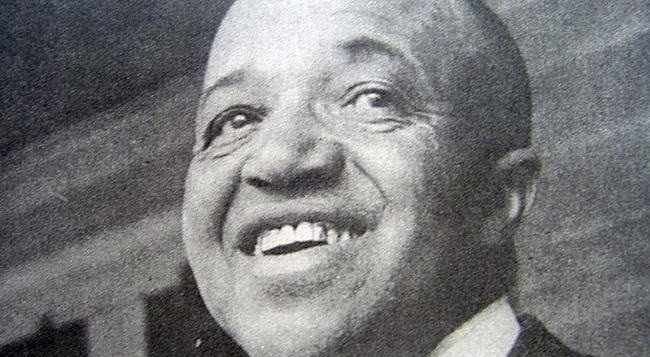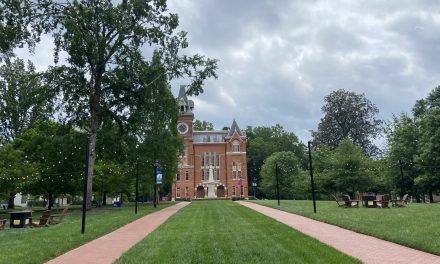
One cold case focuses on Thomas H. Brewer, a civil rights activist in Columbus, Ga. who founded the city’s NAACP chapter. Brewer was shot seven times and killed by Lucio Flowers, the owner of a department store. Courtesy of the New Georgia Encyclopedia.
James Brazier, a black man in Terrell County, Ga., had just bought a new Chevy Impala in 1958. Soon after, he was arrested, jailed and murdered.
Emory’s Civil Rights Cold Cases Project investigates, attempting to understand why Brazier and others were murdered during the modern civil rights era through analyzing primary sources and the cultural climate of the time.
The Emory Civil Rights Cold Cases Project began as a class taught by James M. Cox, Jr. Professor of Journalism Hank Klibanoff and Associate Professor in the History and African American Studies departments Brett Gadsden and has since developed into a larger project with a website launched last week.
While working with civil rights organizations in a national Cold Case project in states such as Louisiana, Mississippi and Alabama, Klibanoff realized that no one in the organization was looking at Georgia cases.
Soon after, Klibanoff and Gadsden met to discuss the possibilities of investigating Georgia civil rights cold cases and ultimately decided that their idea would best be implemented in a classroom setting.
“We felt a great sort of synergy about bringing the rigors of history and journalism into the classroom in this investigation,” Klibanoff said.
“I tell my students repeatedly that it’s not that history repeats itself, but that the study of history is important to help give context to present day circumstances.” – Brett Gadsden
As part of their research, students comb through FBI records, browse newspaper archives, visit state and local records and file Freedom of Information Act requests, according to Mary Claire Kelly (‘14C), a former student in the class.
The class soon began to grow larger than the two professors had expected and evolved into a larger project.
“It became quite clear that there was so much to do, so we should try to go beyond the class,” Klibanoff said.
The project recently launched a comprehensive website that details the cases studied so far, including Brazier’s, and showcases student work. Some of the other cases include a 32-year-old woman who died from a bomb that exploded under her house, a man who was shot after being pulled over for a traffic violation and a preacher who was fatally beaten by two police officers.
Emory’s program differs from programs at other universities such as Northeastern University and Syracuse University, which conduct research using law students and are focused on holding perpetrators accountable.
According to Gadsden, Emory’s project is supported by undergraduates and is less focused on studying “who did it” and more on finding out why.
“Ours is more of a truth-telling or memory project,” Gadsden said.
According to Gadsden, the class provides students the opportunity to research and write for a much larger audience.
“What we’re doing in our work is developing a set of lessons that prepare students to present works to a much larger public, and that’s a terrific experience here at Emory,” Gadsden said. “Because, ultimately, that’s what we as faculty are preparing students for: to go out into the world and to apply the skills that they’ve learned and developed here at Emory and apply those in a variety of different contexts, kind of beyond the University’s gate.”
Klibanoff said he’s been thrilled by the response from students who have taken the class and said he believes many of them have learned a lot from the class, citing the importance of historical context.
“I think that [the students are] coming to see that it’s hard to live in 2013, 2014 and see all the controversies that erupted over Ferguson and these periodic outbursts of police overreaction without linking it and seeing that there is a whole historic arc,” Klibanoff said, referencing the recent killings by police officers of Michael Brown in Ferguson, Mo. and of Eric Garner in Staten Island that sparked protests around the nation.
Gadsden had similar thoughts on the importance of history in understanding the present.
“I tell my students repeatedly that it’s not that history repeats itself, but that the study of history is important to help give context to present day circumstances,” Gadsden said. “What’s striking about the particular project now, especially in light of Ferguson and Staten Island, is that the way in which many of the themes we are exploring in these cases about racial violence, racial discrimination, police brutality, seem to resonate across time and space.”
Kelly took the Cold Cases class in fall 2012 and has continued working on the project since. Now, she’s part of the project’s editorial team.
Kelly wrote in an email to the Wheel that one of the questions she struggled with in the project was, “Why open old wounds?”
“Why pry into these tragic stories that have long since been forgotten by most people?” she asked.
According to Kelly, understanding the past is essential in addressing present problems.
“So many of our current problems in the South are extensions of our roots in Jim Crow,” Kelly wrote. “By remembering [the case victims], and bringing their cases back into the public’s eye, we are making people think about the legal, social and economic situations of our past that did not give justice to these victims.”
Note: Executive Editor Sonam Vashi and News Editor Rupsha Basu are team members of Emory’s Civil Rights Cold Case Project.
— By Annie McGrew, Asst. News Editor





